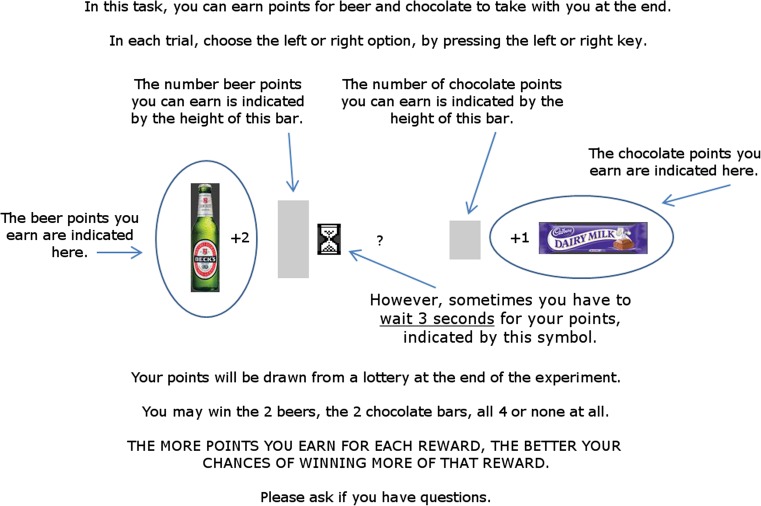Fig. 1.
The instruction screen presented to participants at the start of the concurrent choice task. The left and right arrow keys were used to choose alcohol or chocolate points on offer (response-reward contingencies were counterbalanced between-subjects). The magnitude of the alcohol and chocolate points on offer was signalled by the height of the two grey bars. An hourglass symbol signalled whether a 3-s delay would be imposed on the receipt of the alcohol or chocolate reward, or neither. Following choice of the left or right option, a picture of the selected reward was displayed alongside the number of points earned for that reward (after a delay if this was imposed). Reward points were + 1, + 2 or + 3 signalled by the height of the grey bar. The relative magnitude of alcohol versus chocolate points was manipulated across five conditions (− 2, − 1, 0, + 1, + 2), and delay was manipulated across three conditions (delay alcohol, no delay, delay chocolate)

